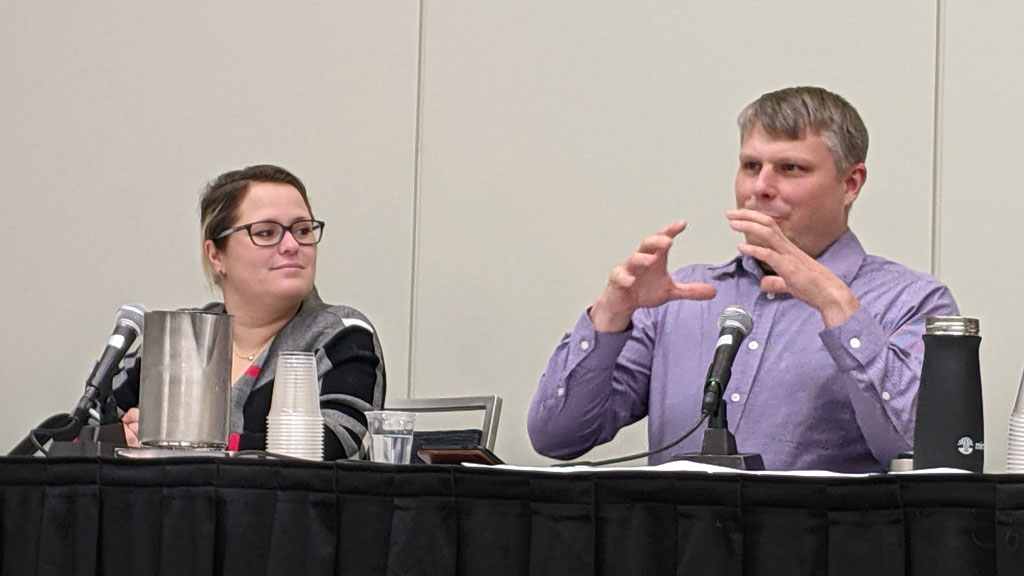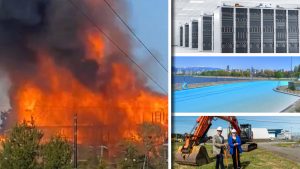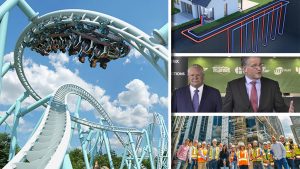The application of artificial intelligence (AI) and machine learning (ML) to building operations is showing huge potential to improve operations and cut costs, experts in the field told a recent Buildings Show audience in Toronto.
But as AI and ML ramp up in the sector, the panellists and certain earnest questioners from the audience stated, there are still enough inefficiencies and bad fits in the growing marketplace to cause potential buyers to tread carefully.
The recent session was billed as How AI/ML Contributes to Efficient, Sustainable and Healthy Buildings, with Wayne Collins, asset and facilities management consultant at Global Facility Management Alliance serving as moderator.
Joanna Jackson, director of innovation with Minto Properties, offered one definition of AI and ML applied to building operations.
“It’s like having super, super smart people who know exactly what’s going on in the building and are just paying attention every single minute and making sure that your building is operating the best it can,” said Jackson.
Tobias Janes, director of technical solutions with EcoPilot Canada, explained when AI is applied to a building automation system (BAS), it monitors the systems and gathers data to optimize control of the systems.
ML, then, looks at the decisions computers and machines have made in the past and makes adjustments for future reference.
Jackson gave an example of a BAS using AI, when heating and cooling systems learn to proactively heat and cool a building rather than being reactive to changes. Minto also uses “alert tabs” to monitor different systems.
“One of them straps onto our water meter and it gives us almost real-time water consumption data, which is good from a perspective of knowing how much water a building uses, but after a couple of weeks, it learns the normal consumption pattern of your building,” explained Jackson. “Then if one of our buildings starts to go way outside of that range, we get alerts.”
Thus Minto is able to react to problems much faster than if the builder had waited for a monthly utility bill.
Next, Janes said, is expanding a system’s capabilities when new connections are incorporated into the BAS.
“What is it that makes it better? It’s data. It’s the amount of inputs,” said Janes, whose firm’s website promotes 40-per-cent HVAC savings using its AI energy platform with a three-year ROI.
“Once you add more data, more inputs equals better outputs.”
But currently, the panellists stated, the BAS is still controlled by people, and that means staff have to be well trained and there has to be effective management of the system.
“There’s always the human element, interaction, interpretation, you’re managing a lot of data,” said Collins. “How do you manage these applications?”
The third panellist, Katerina Karasyova, regional facilities manager with Cushman and Wakefield, expanded on that point of staff input.
“Just understanding the technology, how to utilize it, making sure that our technicians are getting the proper training on it and having proper change management in place so that the users are really understanding what they’re going to be able to achieve with the system,” she said.
“If that’s not done correctly, then people are not going to utilize a system efficiently because they don’t understand it or they don’t understand the capabilities.”
Several questions from the Buildings Show audience reinforced the idea BAS remain a work in progress. One delegate said the technology can be a “game-changer,” but it is not yet proven like an ATM machine is.
“Basically, for me to give over the reins to AI to run my building, it better be bulletproof,” he commented.
The answer to that, Jackson said, is the sector needs to educate consumers and proponents have to continue to build systems and prove they work to build trust.
“A lot of people will be hesitant to adopt that until it’s really working,” said Collins. “An example as it relates to buildings is life safety or fire alarm systems. They’re always separate even though you could automate and control those and monitor them. It’s very rarely you wanted to integrate that with a larger network building automation, but that’s being overcome.”
In response to a question about control systems, Janes and Jackson noted there’s a long way to go before there is adequate standardization.
“There is a range of solutions and different vendors have what they think is best,” said Jackson. “Some are hardwired, some are battery operated, some are on WiFi, some use cellular networks, some are CB and other methods of communication.”
Janes asked, “Does anybody have any ideas on a good wireless temperature sensor, humidity sensor, CO2 sensor? Please let me know.
“If you’re working with a certain technology, which is any type of wireless, not WiFi, but wireless, then you stop, you have to go wire another access point. And this is painful in some of these buildings.
“So having it engineered at the beginning so that all of the sensors are in place is going to be the next step to making this easy to sell.”
Follow the author on Twitter @DonWall_DCN.











Recent Comments
comments for this post are closed